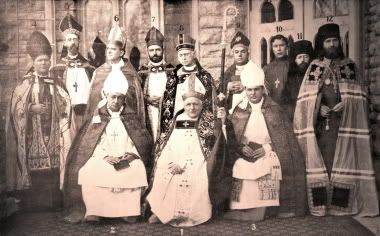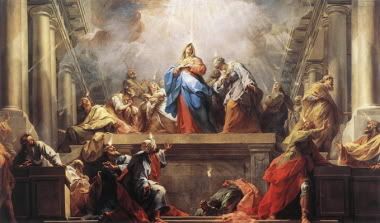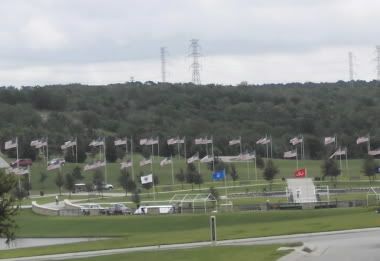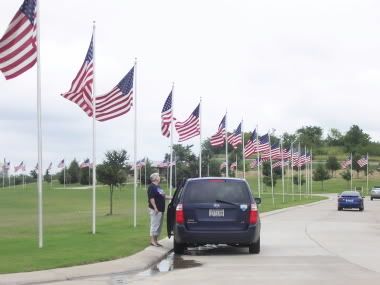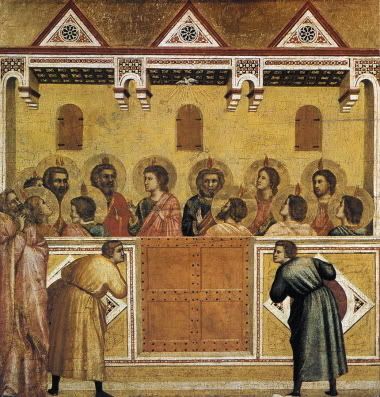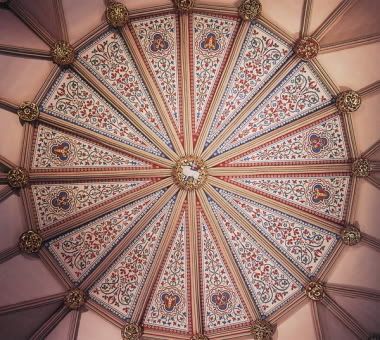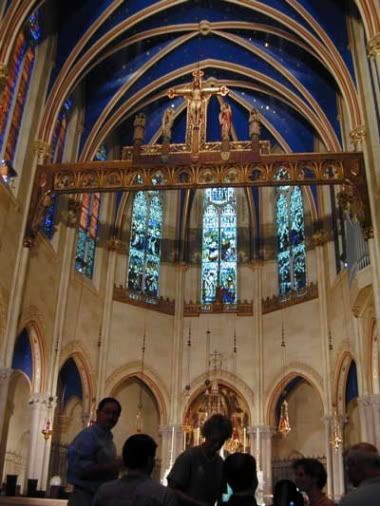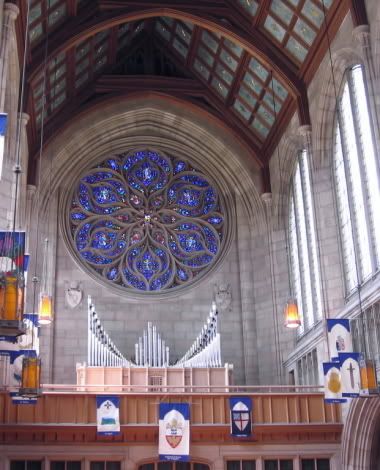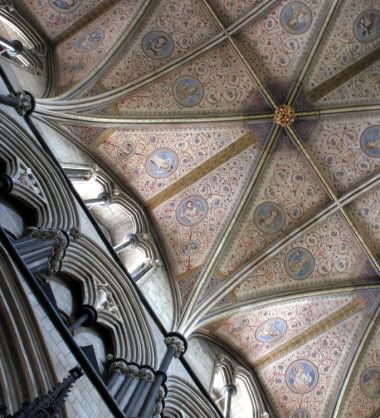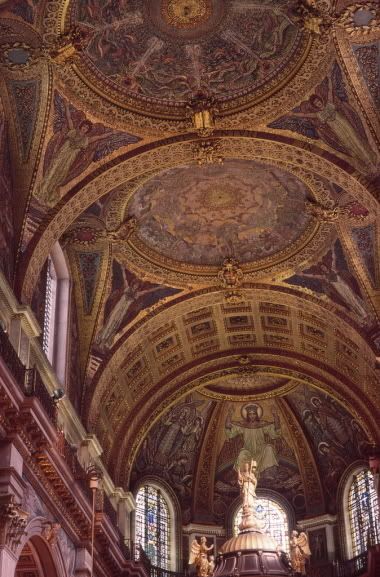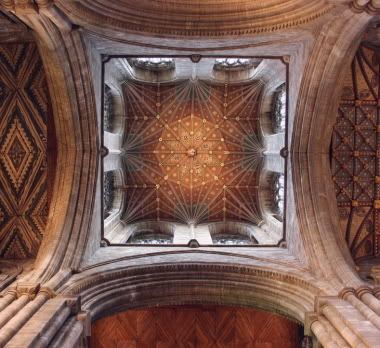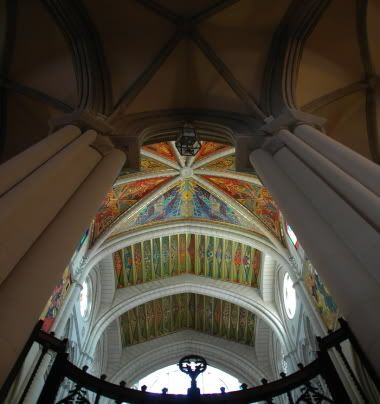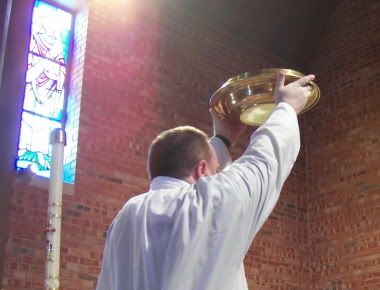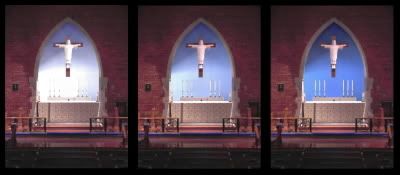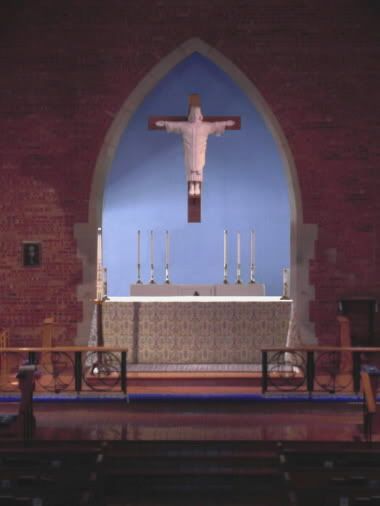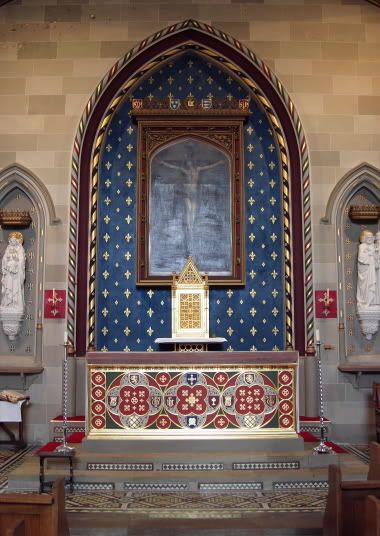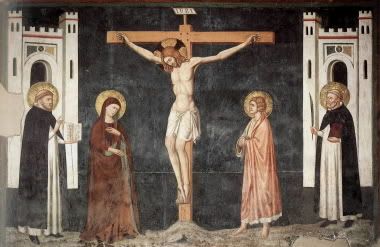This past Thursday, we commemorated the
Ascension of our Lord Jesus Christ into heaven. The gaze of the disciples was turned to the heavens—watching, waiting, and wondering as our Lord went to prepare a place for us.
As the Book of Acts describes it, they seem to have been looking us for awhile, so long that angels came up and tapped one on the shoulder, and said, “What are ya’ll looking at?” They reminded them, “This Jesus, whom you saw ascend to heaven will one day return." So they encouraged the disciples to return to Jerusalem to pray, as Jesus had said.
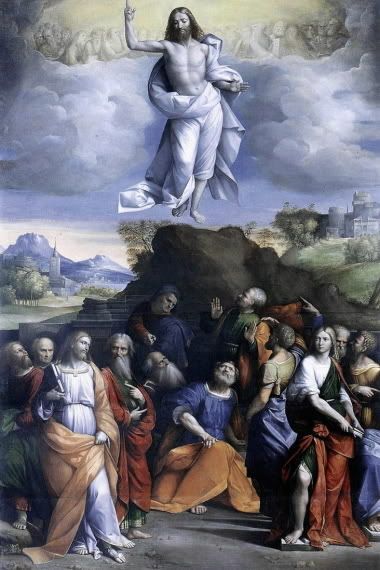
They did so. Still today, we keep
a special nine-day vigil of prayer called a novena between the Ascension and the coming of the Holy Ghost at Pentecost. But I’m sure their attention was still turned toward heaven, pondering the mysteries that lay unseen on the other side of the cloud. And so in this time for us between the Ascension and Pentecost, it’s good that we also turn our attention toward heaven and seek understanding. This is a good time to address the subject, and there’s no better place to learn about heaven than here in church. While we don’t have
the time to be exhaustive on this occasion, I did want to address
a few basic concepts about heaven.
First, What is heaven? What is this heaven to which Jesus has ascended? We sometimes use that word in passing without considering its meaning. What is heaven? Is there one answer to that question? Would I recognize heaven if I saw it? The Bible has much to say about heaven, but the manifold metaphors and details are sometimes hard to separate and analyze and understand. Pearly gates? Streets of gold? Walls of jewels? Is heaven a magnificent palace?
Behind the many references to heaven, I think we can find one central concept: heaven is the abode or dwelling-place of God. Therefore, in going to heaven, Jesus goes home to the Father. Heaven is God’s dwelling-place, but he does not want to dwell in solitude. As creatures made in God’s image, we were fashioned to share more and more fully in the life of heaven—to be at home with God. This is the sense in which the Prayer Book defines heaven:
“By heaven, we mean eternal life in our enjoyment of God” (BCP, 862).
This is what theologians have called the
Beatific Vision: the fullest experience of heaven is the intuitive and unobstructed knowledge of God as he is—that is, to behold God face-to-face. And this intimate communion with God becomes the source of everlasting happiness for the human soul. This is what we pray for at funerals. The catechism says we pray for the dead,
“because we still hold them in our love, and because we trust that in God’s presence those who have chosen to serve him will grow in his love, until they see him as he is” (BCP, 862). This is the Beatific Vision.
Let us not forget, however, that the joys of heaven are not only found in fellowship with God, but also in the joys of fellowship with those we love. That means being reunited with family and friends. It means the joy of getting to know family members we have heard about but have never met because they died before we were born. Sharing a home with God means sharing that home with others.
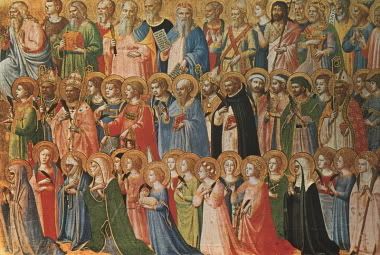 Second, we are led to ask, Where is heaven?
Second, we are led to ask, Where is heaven? Despite the fact that Jesus ascended into a cloud in the sky, it does not follow that heaven is necessarily “up there” somewhere on the other side of the clouds. Indeed, if heaven is God’s dwelling-place, it seems that earth might be considered
a part of heaven in the beginning, when God walked and talked with Adam and Eve in the garden paradise of Eden. It was certainly heaven for them. Yet, in a sinful world, God seems distant—above and beyond the toils and tragedies that we know in the here-and-now. Wherever heaven is, we feel it is surely
apart from earth.
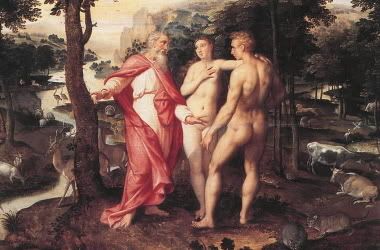
Now Jesus prepares a new heaven for us. The Book of Revelation speaks of a new heaven and a new earth, where God dwells perpetually with his people in a common home.
“The throne of God and of the Lamb will be in the city, and his servants will serve him. They will see his face, and his name will be on their foreheads” (Rev 22:3-4).
Theologian Karl Rahner put a new spin on what heaven means for us. He observed that instead of looking at Jesus as going to a pre-existing place called heaven, we could instead say that Jesus returned to the Father to establish heaven as the fulfillment of the promised union of humanity with God, begun with the union of the human and divine within Christ at the incarnation.
Likewise, when Christ returns to earth in glory, it’s not so much that he leaves heaven as it is that he brings heaven with him and remakes a heaven out of earth.
“The seventh angel sounded his trumpet, and there were loud voices in heaven, which said: ‘The kingdom of the world has become the kingdom of our Lord and of his Christ, and he will reign for ever and ever’” (Rev 11:15). That sounds like something worth being a part of.
So thirdly let us consider, Who goes to heaven? Or to put it another way, How do I get there? It is said that there will be three surprises in heaven: The first surprise finding people in heaven that you never expected to be there. The second surprise is looking around for those you expected to see in heaven, but not being able to find them there. And the third surprise is that you are there. What a joyful surprise that is! And it should surprise us, for Jesus is really the only human being who belongs in heaven. But remember that God does not want to dwell alone.
When Jesus told his disciples he was going to prepare a place for us and we know the way to follow, “Thomas said to him, ‘Lord, we don’t know where you are going, so how can we know the way?’ Jesus answered, ‘I am the way and the truth and the life. No one comes to the Father except through me’.” (Jn 14:5-6)
Since only Jesus belongs in heaven, he is our only way into heaven. We don’t belong because we have been estranged by sin. But Jesus atoned for our sins and made forgiveness possible. Through his incarnation, death, resurrection, and ascension, he has become the means for restored fellowship with God. So the way to heaven is being “in Christ,” as St Paul so often expressed it. It means that we are joined to him, united to him, share his resurrected life. If we make our home in Christ, we will find ourselves in heaven. That's why Jesus prayed in
today's Gospel reading that we may find our unity by dwelling in the Son, who is one with the Father.
Ontologically, this union begins with baptism. The sacrament of Holy Baptism is our death to our old selves and our rebirth into the resurrected eternal life of Christ.
"We were therefore buried with him through baptism into death," as St Paul wrote to the Church in Rome,
"in order that, just as Christ was raised from the dead through the glory of the Father, we too may live a new life" (Rom 6:4). Likewise, Holy Communion, “the Bread of heaven,” sustains that intimate fellowship with God and sharing of resurrected that comes through first being joined to Christ when we are born again at our baptism.
As you come to the altar today, to the sanctuary where heaven overlaps with earth, know that you come to find a foretaste of our promised inheritance, for all the glories of the risen Christ have ascended into the sacraments.
We therefore beg, dear Lord of thee
To pardon our iniquity;Yea, of thine own supernal grace
Uplift our hearts to seek thy face:That when in clouds, O Judge of doom
Thy glory shall this earth illume,Thou mayst remit our debt of pain,
And grant our long-lost crowns again.All praise from every heart and tongue
To thee, ascended Lord, be sung;Whom with the Father we adore,
And Holy Ghost, for evermore. Amen.
